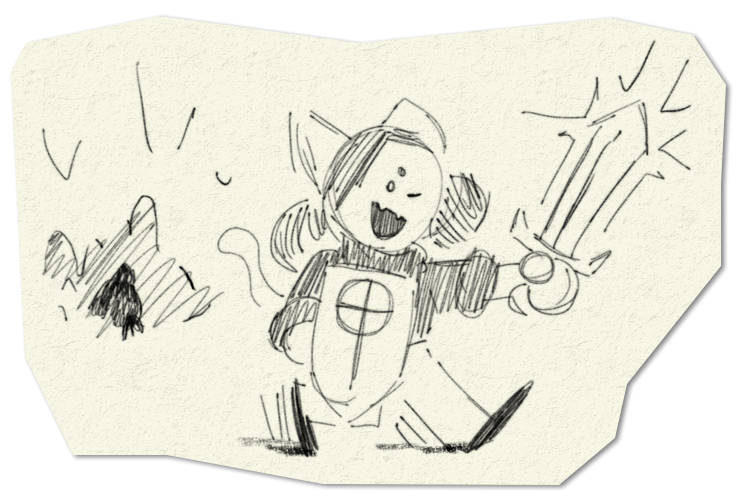A Game I Made in High School

Back in high school, I made a hybrid paper-video game to help pass the time. This game was designed around the materials that I would usually have access to, namely, a notebook, a pencil, and a calculator that had a random number key, and could be played solitaire or in a group.
-
Draw a random, vaguely cave or dungeon-like map. It cannot have any "exclaves" or areas that are inaccessible to the player.
-
Cut the map up into a number of distinct sections. Label each section with a number between 0 and 1, excluding 0 and 1.
-
Mark two points on the map, one for the player's entrance, and another for the player's goal (exit, treasure, etc.). Players may have multiple goal points, where they have to travel to every one to win.
-
On a scorecard, mark the player's health (starts at 100), damage (starts at 10), and inventory (blank).
-
Gameplay is as follows:
-
The player travels in any direction at a set distance (1 in., but can be adjusted for balance). Mark a line from the player's previous point to their current point.
-
Upon the player's travel, roll the random number on a calculator and discard all but the last digit (the ones place).
-
If the number is less than or equal to 5, nothing happens and the turn ends.
-
If the number is 6, add a health potion to the player's inventory.
-
If the number is 7, add 5 points to the player's damage.
-
If the number is 8 or 9, initiate a fight.
-
Create another scorecard to record the enemy's health.
-
Choose a random enemy. If an area has a separate list of enemies, choose from them. Add their name and health to the enemy scorecard.
-
Each round of a fight, player may choose between attacking or using an available health potion.
-
Player damage is calculated by taking their damage value, multiplying the value by 1 + section value, then multiplying again by the calculator's random value, keeping only the first digit and dividing by 10 and adding 1. Resulting value should be rounded to the nearest integer.
-
For example, if a player has 25 damage, in a section with 0.4 boost, and rolls a 9, their damage output would be 67.
-
Enemy damage is calculated the same way but the section boost is only 0.5 + section value.
-
For example, an enemy in the same scenario as the player would do 43 damage.
-
Enemies will always choose to attack.
-
Write down the new health values on both player and enemy scorecards.
-
Repeat until either the enemy or the player dies.
-
Player will always encounter a fight upon hitting a goal point and can only win at the final goal point upon defeating the enemy there. Enemies at goal points will have double base damage.
I kept the game deliberately open-ended so I could change rules around depending on how much time I'm alloted to play. One could also add numerous other features easily, like shops to exchange potions or treasures to straight upgrades, enemies having multiple abilities during fights, etc.
I had a whole notebook of these games in school but they are sadly all long gone, shuffled around in various moves and slipping through the cracks. As such, the rules presented here are just my own recollection, as I cannot remember the specific values for things like enemies. I know there was an opossum and bear enemy. They may have all been woodland critters. They all were stored in a chart in the back of the book with jokey illustrations to go with.
I don't think I ever played this game with other people, though some friends did take a passing interest in it. They were more interested in the computer games I would make and show off at school. A rat farming-themed clicker game was quite popular, even among kids I had never met. I would find different ways to circumvent the school's network blocking games, like sneaking them in Google Docs or e-mails. Good times :)
This page was made for HTML Day, organized by html.energy. Go give their site a look.
Return to main page
|
